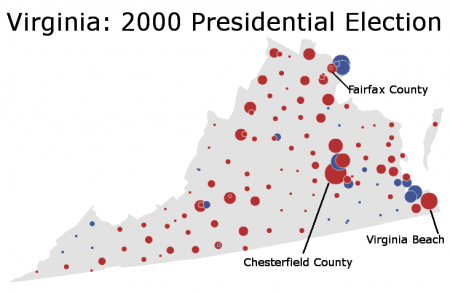For this diary, the South Atlantic is defined as South Carolina, Georgia, and Florida. This area is one of the fastest growing areas in the nation in regards to population growth. 50 years ago the Democratic party dominated this region. Today? Well, it’s just complicated. I will review the results of certain general election results over the last 50 years.
US House Representation Realignment
After the 1960 general election, the Democrats had approximately 60% of all house seats (and 64 of the 100 senate seats). I have inserted below the results of certain general elections.
After each US House election, The South Atlantic
1960: 23(D), 1(R)
1964: 25(D), 3(R)
1966: 22(D), 6(R)
1972: 24(D), 7(R)
1978: 25(D), 6(R)
1980: 22(D), 9(R)
1982: 25(D), 10(R)
1990: 22(D), 13(R)
1992: 20(D), 20(R)
1994: 14(D), 26(R)
2000: 13(D), 27(R)
2002: 14(D), 30(R)
2006: 17(D), 27(R)
2008: 18(D), 26(R)
50 years ago, the Republicans literally had no strength in this area. With the introduction of the civil rights era, the Republicans made some modest gains. However, the gains were very minimal until the 1992 election of Bill Clinton. The Contract with (on) America resonated well with the South Atlantic, sweeping in Republicans on record pace. The Democrats were fairly decimated as a result. However, with the Bush Administration policies, this area became more skeptical of the Republicans. There were some Democratic gains, but not as much as other regions in the US.
After each US Senate election, The South Atlantic
1960: 6(D), 0(R)
1964: 5(D), 1(R)
1966: 5(D), 1(R)
1972: 4(D), 2(R)
1978: 5(D), 1(R)
1980: 3(D), 3(R)
1982: 3(D), 3(R)
1990: 4(D), 2(R)
1992: 3(D), 3(R)
1994: 3(D), 3(R)
2000: 5(D), 1(R)
2002: 4(D), 2(R)
2006: 1(D), 5(R)
2008: 1(D), 5(R)
The Democrats had firm control in 1960. The first Republican held seat in this region resulted from Strom Thurmond’s conversion to a Republican. In 1980, on the coattails of the Reagan Revolution, the Republicans had a split with the Democrats. In 2000, with Zell Miller having been appointed in 1999 as the replacement for Corvedell and Bill Nelson’s victory over McCollum, the Democrats again had firm control. However, over the next few cycles the Democrats lost a seat in SC (Hollings retirement), 2 seats in GA (Miller’s retirement, Cleland’s defeat to Chambliss), and 1 seat in FL (Graham’s retirement). The sole Democrat representing this region is Bill Nelson, a moderate Democrat.
Conclusions
The former Dixicrats are reluctant to support Democratic candidates. However, certain Blue Dog Democrats are found appealing to these socially conservtive voters. This region will support Blue Dogs, evident by Boyd (FL-2), Barrow (GA-12), Bishop (GA-2), Marshall (GA-8), and Scott (GA-13). The area also contains several majority-African American districts which will be in the hands of Democrats for many years. However, I believe that the Democrats can still build on these numbers in future years. Florida is still seeing population growth, and Georgia is a fast growing state too. Even South Carolina will gain a district from the 2010 Census. I honestly believe that while the Republicans should hold a mild advantage, the Democrats should be able to obtain a split in the Senate and the House. We haven’t reached our limit here at all. Promoting moderate and Blue Dog Democrats in areas controlled by Republicans could help, along with an emphasis on Senior issues, especially in Florida.


